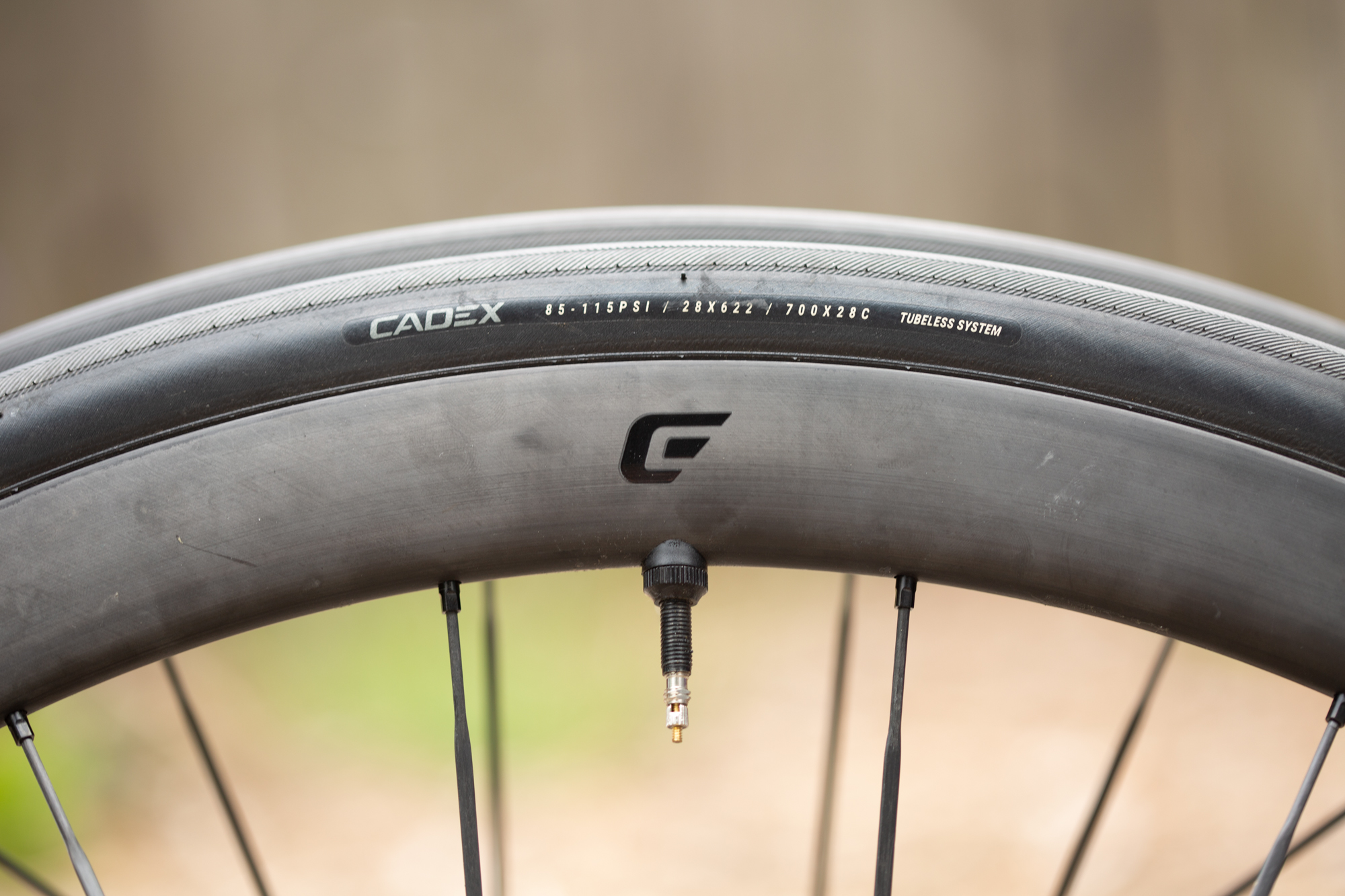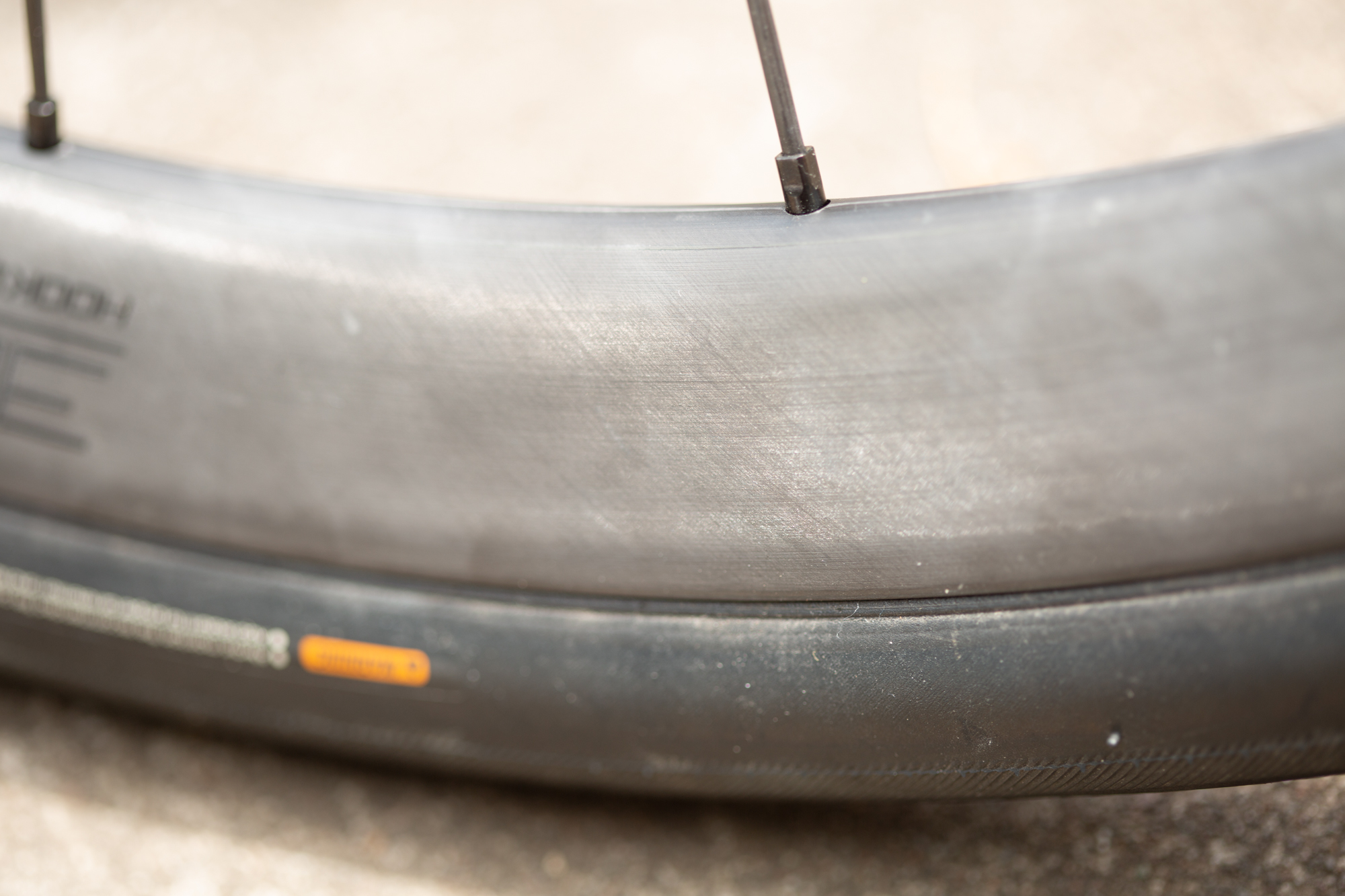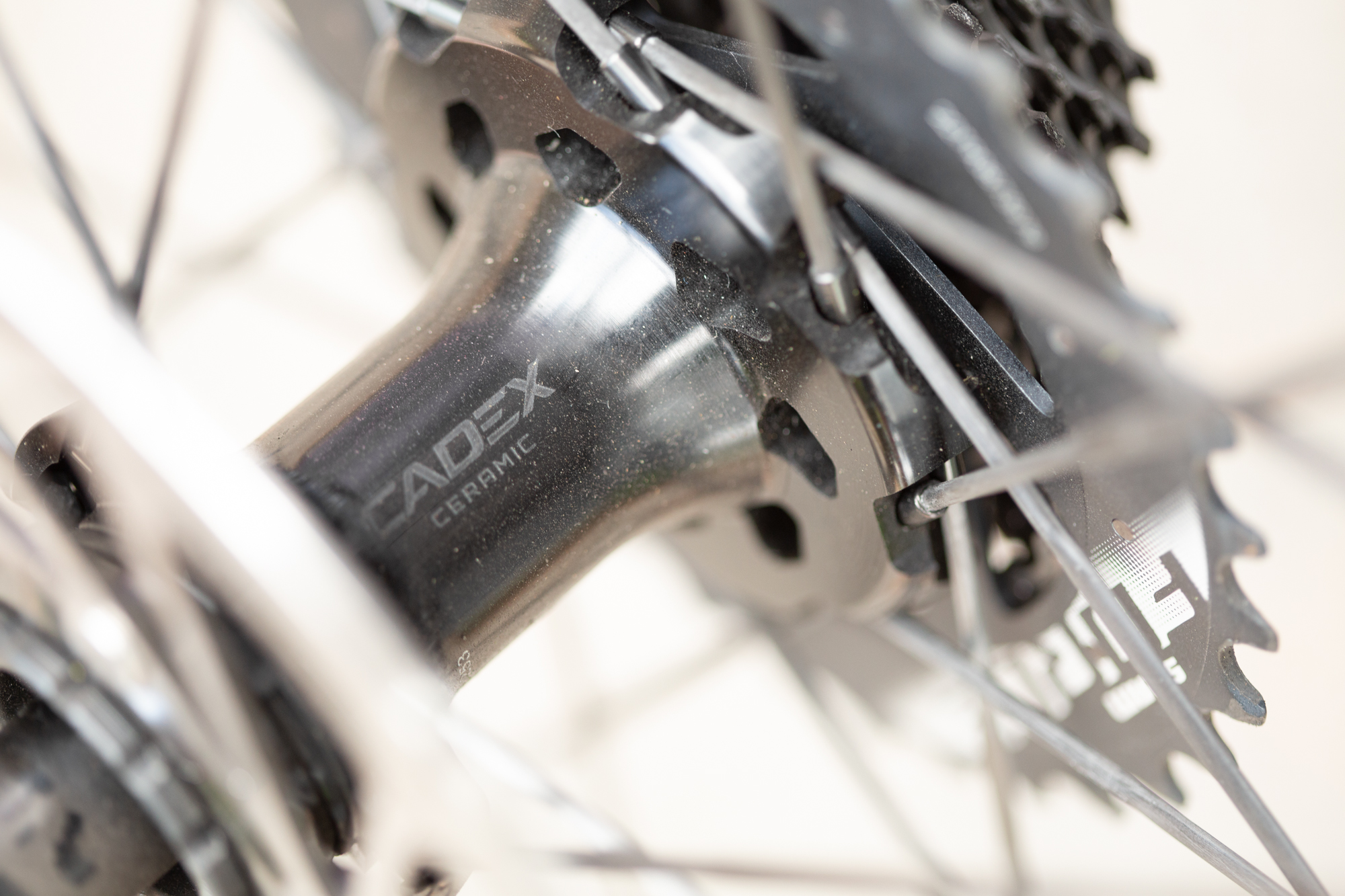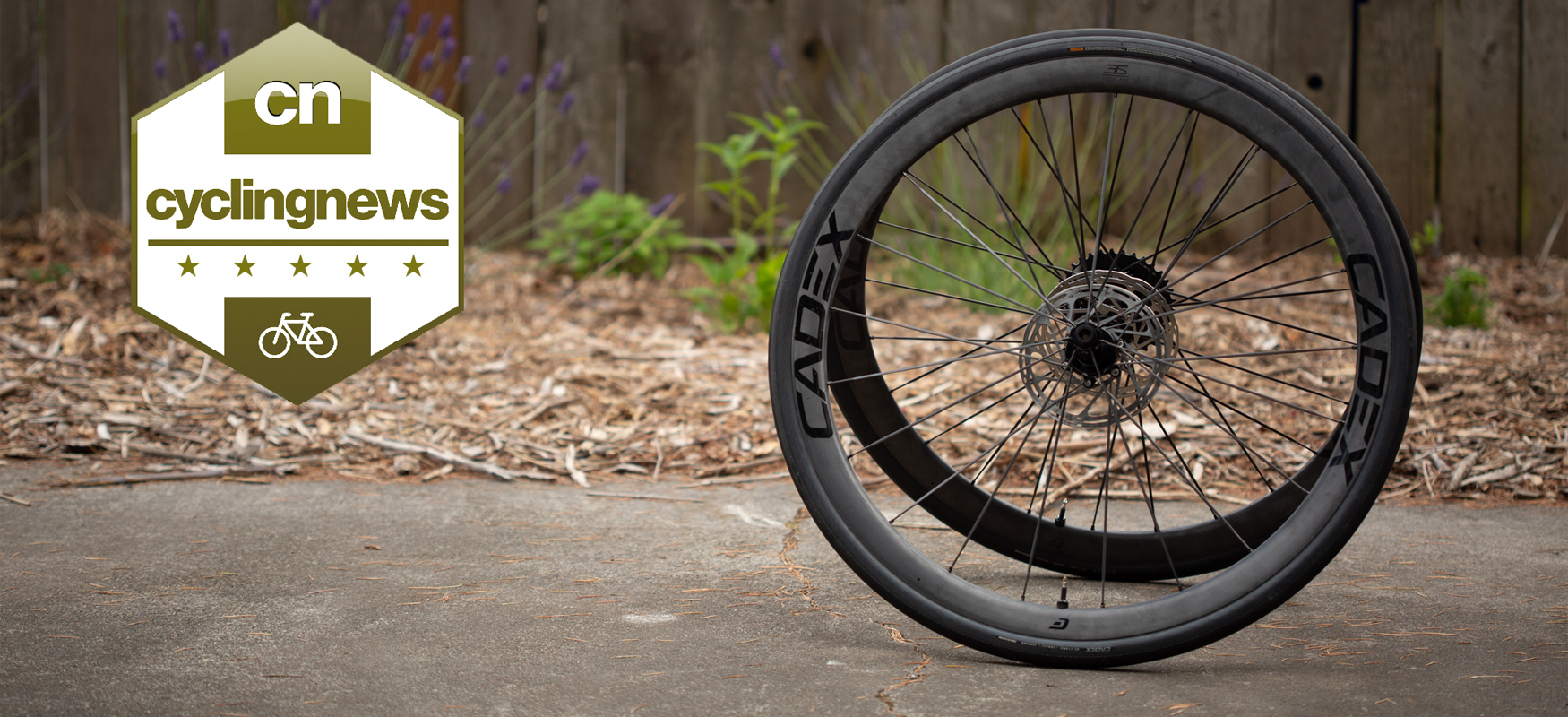Cyclingnews Verdict
A light, stiff, wheel that brings much of the performance from a deep wheel with more versatility. If you are willing to spend the money you get the performance to match
Pros
- +
Incredibly light
- +
No loss of stiffness in the quest for low weight
- +
Wide, internal rim architecture
- +
Ratchet-style rear hub
Cons
- -
Expensive
- -
Limited selection of approved tyres
You can trust Cyclingnews
The best companies in the world never stop innovating. That's because they attract people with a relentless drive. Cyclists understand this need to constantly be moving forward and always getting better. When companies get really big though it gets more difficult to take the risks needed to sustain the drive. Price points and market placement can start to dull the pace of forward movement. One way to handle that is to create a moonshot group. A smaller group within the larger company that's empowered to create only the best with no regard for the business side of the equation. That is what Cadex is within the Giant group.
In 1987 Cadex formed with the purpose of creating a revolutionary, super-lightweight, full carbon-fibre bike. The group went dormant in the 90s but in 2019 it returned. The purpose remains to keep product innovation and performance as the primary driving force. The Cadex 36 Disc is a new addition meant to extend that mindset to a new category of wheels, and it manages to compete very well against the competition in the best lightweight wheels segment.

Design and aesthetics
The primary design language of the Cadex 36 disc is that of raw carbon fibre. Calling the finish matte wouldn't be wrong but it also doesn't really capture the reality. A matte finish comes from paint, whereas Cadex uses a resin with UV protection and no paint.
Branding and other details on the wheel consist of gloss-black decals. There's a full Cadex logo on opposite sides of the rim. Just above the valve stem, there's a small Cadex logo that helps locate the valve stem and forms a visual triangle with the writing on the tyre and the valve. It's the kind of subtle design language you can imagine a designer being very pleased about. Opposite this detail is a bit of text proudly proclaiming the rim depth and use of hookless technology.
Put everything together and you've got what I would characterise as an understated statement piece. A contradiction perhaps but it makes sense when you spend some time with the Cadex 36 Disc wheels. In a lot of situations, they look somewhat plain. The gloss-black logos and text pop off the surface but there's nothing particularly flashy about any of it. Catch the carbon in the right light though and it's a stunning testament to the manufacturing. You can see the orientation of the strands in the carbon and it's easy to lose yourself in admiring the details.
- Best road bike wheels: Our pick of the best wheelset upgrades

- Best tubeless road tyres: Our pick of the top tubeless road tyres
- Best road bike tyres: Fast-rolling, ultra-grippy tyres for training and racing
Specification and build
Cadex does everything for a reason. It isn't an independent brand that has to fill out a portfolio of offerings to capture market share. Cadex is free to design and produce the products that fill the need it sees. With that in mind, the 36 disc exists not to be an ultralight climbing wheel but instead to be an all-around wheel. That means that there's a focus on holistic design rather than chasing ultimate lightness. It's worth noting though that it happens to be a stunningly light wheel but that's more of a side effect.
The real key in the Cadex 36 disc is the design of the spokes and the stiffness they provide. Getting stiffness where you need it in a shape like the rim of a wheel is, at this point, not a challenge with carbon. Companies have figured it out and Cadex is one of many that does it well. Doing something really different with spokes is less common and that's the case here. The construction is carbon but it's not bonded to the rim, instead, there's a mechanically joined alloy head that threads into the internal nipple. The design claims to be 46 per cent lighter than standard steel spokes. More important than the weight though is that the carbon better transmits power through the wheel.
When we think of wheels it's easy to think of them as a solid piece that turns when we push on the pedals. That's not really true though. What happens is that the power starts at the hub then flows to the rim where it acts against the force of the ground. The carbon spokes combined with the Dynamic Balance Lacing (DBL) technology makes for quick transmission of that power. Quick transmission means a wheel that feels lively.
That, of course, is the point. You can think about the design of the Cadex 36 disc as two narratives. First, get the rider up to speed quickly then hold the speed as much as possible. The high transmission stiffness helps get the rider up to speed. Once there it's a process of removing obstacles to holding speed and that falls on the shoulders of the hubs.
For the hubs, Cadex uses a 30-tooth ratchet type. It's similar in some ways to other Cadex wheels, as well as products with DT Swiss internals. Ratchet hubs are less complex and by extension more reliable, and the fewer number of pieces also makes for lower weight. Balancing engagement points vs reliability is the magic, and in this case, Cadex went with a 30-tooth ratchet system combined with ceramic bearings. The design minimizes resistance to keep you rolling at speed. There is compatibility for Shimano 11, SRAM XDR 12, and Campagnolo freehubs with 100x12 thru-axle front and 142x12 rear.

Performance and handling
I'm familiar with Cadex wheels. The wheels I ride most of the time are the Cadex 65 Disc Tubeless and if I'm being honest, I didn't want to change. In a lot of ways, aside from the obvious change in rim depth, there's not a huge difference between the two wheels. You get the same hookless design with a wide, 22.4mm internal width. It does limit your tyre options but the tyres offered by Cadex are some of the best tubeless road tyres I've ever ridden. It's more of a challenge to find them but stock up and you won't worry about other options.
Although these are stiff wheels, they ride phenomenally. That wide internal sizing and the excellent 28mm tyres are a tough combination to beat. Air the tyres down to 50psi, dependent on your weight of course, and don't for a moment worry that you'll feel beat up by road vibrations.
Fitting the tyres to the wheels is also phenomenal. It's basically a lesson in the promise of tubeless technology. I use tyre levers to fit tyres and I did here as well. Once I got the tyre on the wheel, I gave the wheel a quick roll around the house to ensure the bead was even in the channel then pumped them up with a standard pump. The bead snapped into place and I added sealant the next day after being sure there were no leaks. The process was almost the same as a tubed-tyre setup.
Once getting them set up, I devised a test. Cadex calls them the all-day wheels and so I took them on a 160-mile route. It's over a ridge then down into a valley with a bike trail that the pandemic has not been kind to. Once you leave the trail it heads into the mountains where you get stunning views of the Columbia River bordering Oregon and Washington. The final section is an all-out highway section where aerodynamics rule. The route tests everything the wheels claim.
As soon as you get on the bike the lightness is apparent. I was dropping around 300 grams and it's noticeable just handling the bike and cruising through the city. Get them onto the first set of steep climbs and the stiffness comes into play. I was taking it easy at the start of a long ride and a friend passed. When I jumped to chase the liveliness and immediacy stood out. From there I got an unexpected test of the compliance that good tyres, a wide wheel, and the right pressure brings. The section of bike path that's fast and flat is also cracked and each small bridge means a hard line with an elevation change between surfaces. It was bad but I never felt beat up and there was no complaint from the wheels.
Keep pushing through the next section of climbing and the route finishes with a highway section. The 36mm depth balances aerodynamics while remaining mostly immune to crosswinds and passing cars. Pace lining across this smooth road kept us flirting with 30mph for miles. It's hard to test aerodynamics but what I can say is I didn't feel held back by the shallower wheels. When trucks passed there was no sucking sensation requiring steering correction.

Buy the Cadex 36 Disc wheels at Cadex Cycling
Verdict
The Cadex 36 wheels are sold as the all-day wheel. What that really means is they are the wheels you never have to worry about choosing. The 65mm wheels are amazing wheels, too, but you have to be sure about taking them out. You have to check the weather and consider if it's going to be windy. If you are heading to the mountains you have to wonder if they are the best choice. If you don’t want to think about it, or if you have one bike and one set of wheels then the Cadex 36 is the right choice. The focus on getting you up to speed fast and keeping you there comes through on the road and you never have to worry about what the route will bring.
The only real consideration is price, which is set at $3,450 / £2,498 for the set ($1,500 / £1,099 for the front and $1,950 / £1399 for the rear). There are many cheaper options out there, as well as a few more expensive for that matter, but you do get what you pay for if you choose the Cadex 36.
Test Conditions
- Temperature: 70-80 degrees Fahrenheit
- Terrain: Country roads, bike path, highway
- Mileage: 160 miles for initial test
Tech Specs: Cadex 36 Disc wheelset
- RRP: $3,450 / £2498 for the set ($1,500 / £1099 for the front and $1,950 / £1399 for the rear)
- Weight: 1,302g
- Depth: 36mm
- Internal width: 22.4mm
- External width: 26mm
- Spoke count: 21/24 front/rear
- Tyre format: Clincher, tubeless
- Brake: Disc
Josh hails from the Pacific Northwest of the United States but would prefer riding through the desert than the rain. He will happily talk for hours about the minutiae of cycling tech but also has an understanding that most people just want things to work. He is a road cyclist at heart and doesn't care much if those roads are paved, dirt, or digital. Although he rarely races, if you ask him to ride from sunrise to sunset the answer will be yes. Height: 5'9" Weight: 140 lb. Rides: Salsa Warbird, Cannondale CAAD9, Enve Melee, Look 795 Blade RS, Priority Continuum Onyx

